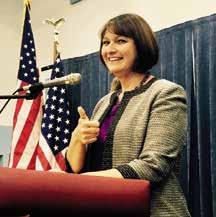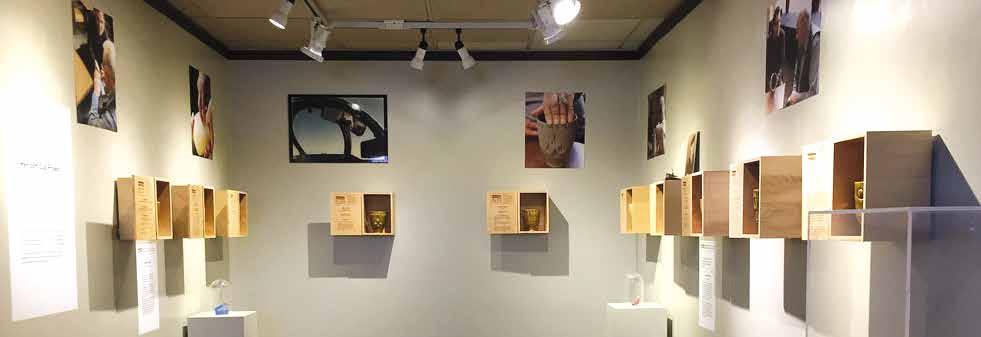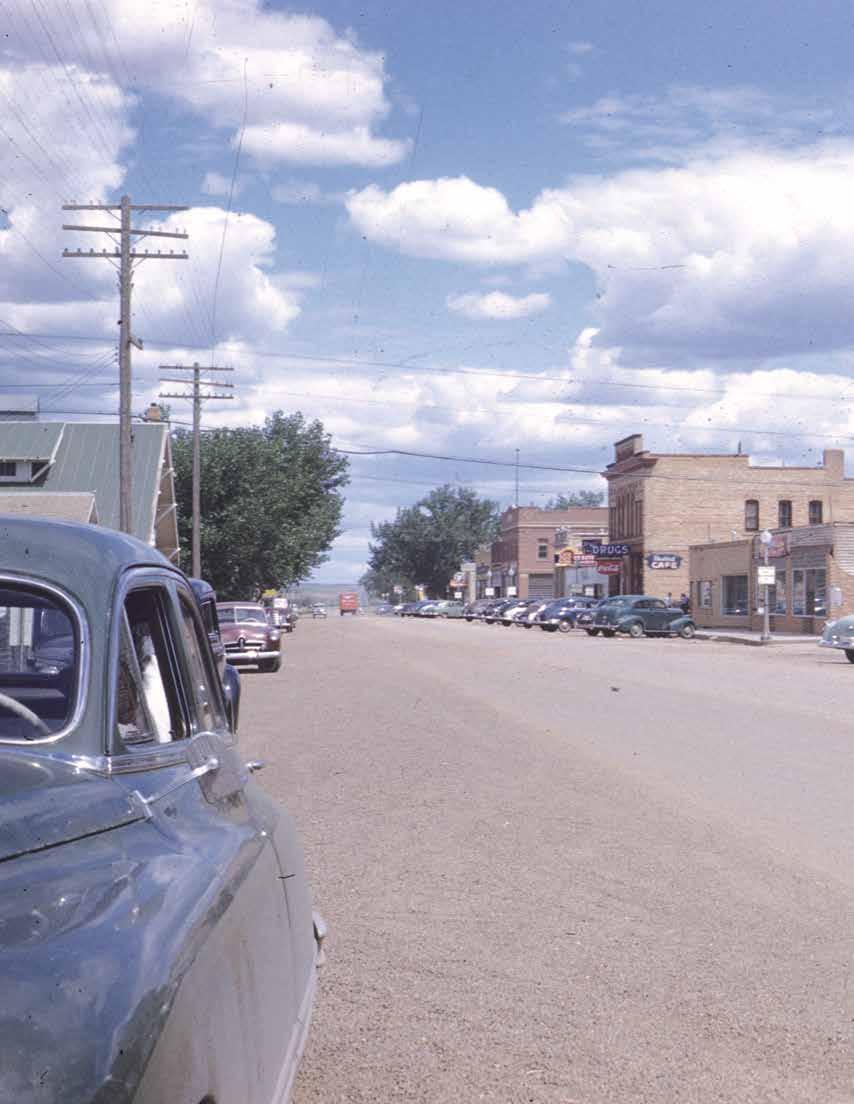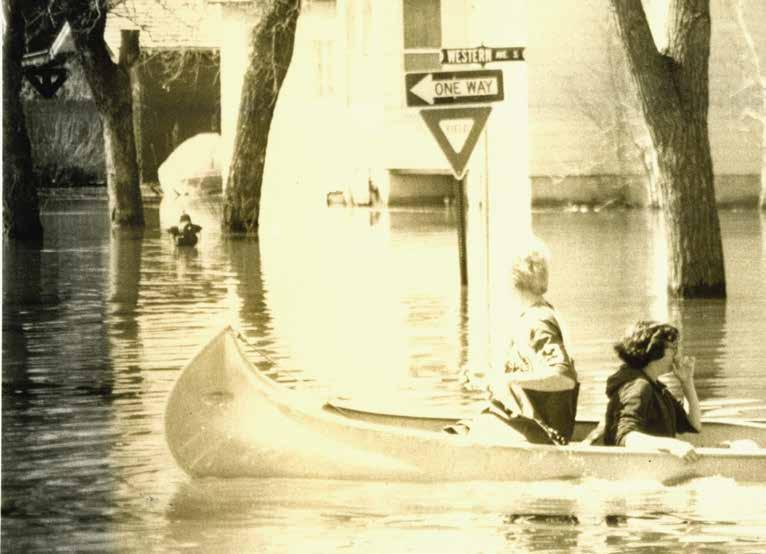
10 minute read
The Year of the Native Voter? Not Yet
By Mark Trahant
I had 2016’s headline already written: The Year of the Native Voter. There were, after all, a record-breaking number of American Indians and Alaska Natives running for public office across the country, as well as several state programs designed to increase turnout. These efforts built on decades of promise, a step-by-step effort to increase ballot access, recruit strong candidates, and create enthusiasm for the election process in Indian Country.
Advertisement
As it turned out, 2016 was just another building year. The long-term goal of making sure Native Americans have fair representation in federal, state, and county governments remains distant. Consider Congress: Native Americans make up about 2 percent of the country’s population (concentrated in a few states), yet the representation in Congress is 0.37 percent, about one-third of 1 percent or two members. At one point this summer, there were nine candidates for Congress, including several who had experience and the ability to raise serious money in their quest. After election day, the only two who won were those reelected from Oklahoma. No change.
The story of Native American election efforts dates back more than a century and is part of a larger narrative about a democracy for all.
The New Jersey Constitution once limited the franchise to all residents “who are worth fifty pounds.” That included women and African Americans, but by 1807, that line was rewritten so clearly only white men were eligible. And in the nineteenth century, some voters were organized into exclusive paramilitary units, the Wide Awakes, who would march to the polls in a torch-like parade.
In April 1880, John Elk set out to register to vote in Omaha, Nebraska. The clerk “designedly, corruptly, willfully, and maliciously, did then and there refuse to register this plaintiff, for the sole reason that the plaintiff was an Indian, and therefore not a citizen of the United States, and not therefore entitled to vote.”
Elk went to the polls anyway. The same clerk was a judge and refused to give him a ballot.
Eventually, the US Supreme Court agreed. The justices reasoned Elk had been born an Indian and therefore was not a citizen. So he could not vote. He owed his “immediate allegiance” to his tribe, not the United States. After World War I (American Indians have historically served in the military in high numbers), Congress passed the Citizenship Act guaranteeing Native Americans the right to vote. But that was a Washington, DC, idea—and many states objected. North Dakota, South Dakota, Idaho, Maine, Mississippi, New Mexico, Utah, and Arizona all found legal loopholes to prevent Native Americans from voting until as late as 1962. The civil rights movement, and stricter federal oversight during the 1960s and 1970s, slowly increased access for Native American voters.
---
Even in 2016, state legislatures used a variety of measures to make it more difficult for people to exercise their right to vote. A federal court said Native American voters were being singled out because of North Dakota’s voter identification law. US District Judge Daniel L. Hovland wrote: “The undisputed evidence before the court reveals that Native Americans face substantial and disproportionate burdens in obtaining each form of ID deemed acceptable under the new law.” There is also “undisputed evidence that more than 3,800 Native Americans may likely be denied the right to vote in the upcoming general election in November 2016, absent injunctive relief.” One of the main problems is that many who live on reservations do not have the same kind of addresses as those living in a city. A post office box won’t do, and streets and houses are not numbered. This remains a problem to be solved.
Even with those obstacles, it’s worth noting how many American Indians and Alaska Natives chose to run for office.
North Dakota was at the front of this trend. It’s a state where 90 percent of the population is white, and American Indians are the largest minority at 5.4 percent. Yet three Native American candidates ran for statewide office: Chase Iron Eyes, Standing Rock Sioux Tribe, for US Congress; Ruth Buffalo, Mandan, Hidatsa, and Arikara Nation (MHA), for state insurance commissioner; and Marlo Hunte-Beaubrun, Standing Rock Sioux Tribe, for a seat on the three-member Public Service Commission. They all lost, and by wide margins, but it’s worth noting that they did better than many of the other Democrats running for office in the state. And, as I like to point out, you gotta run to win.
And that was the story in Montana.
The state’s high-profile race was the congressional race featuring Denise Juneau against the soonto-be interior secretary, Ryan Zinke. Juneau is an enrolled MHA member, and she jokes that she went from the Blackfeet Head Start program to Harvard. She’s an attorney and eight years ago, won the post of Montana’s superintendent of public instruction. She’s the only Native American woman to ever win a statewide office—and she had a shot at being the only Native American woman to ever win a seat in Congress. But not this year.
“I am sad that I lost, but I do not feel bad about our campaign because we ran a damn good campaign,” Juneau said. “We raised more money than any Democrat that’s ever been in this race, we had good ads, we had great advocates out in the community, we had organizations helping us, we did everything we were supposed to do. We just lost. Those are bitter pills to swallow, but sometimes that’s what happens.”

Rep. Wenona Benally represents counties including the Navajo Nation in the Arizona legislature. (Photo via her campaign Facebook page.)

Idaho Rep. Paullette Jordan. She is a member of the Couer d’Alene Tribe and represents Northern Idaho counties in the state legislature.

Denise Juneau is the most successful Native American woman to run for Congress. Even though she lost her bid for a seat from Montana she raised more money than any Native woman ever running. She is a member of North Dakota’s Mandan Hidatsa and Arikara Tribes. (Trahant photo)
But this story is richer than just Juneau. Some twenty years ago, Montana was much like any other state with a significant Native American population, with only one or two Native Americans serving in the state legislature. But in 1997, a third Native American candidate won. And then another and another. So this year, nine Native Americans were elected, an increase that included for the first time, representation from an urban area. Native legislators now make up 6 percent of the legislature in a state that’s 7.4 percent Native American. It’s not quite parity, but it’s closer than most states. The American Indian caucus could be a key bloc in the upcoming legislature, and both parties are paying attention. Representative Susan Webber (Blackfeet) told the Montana Standard: “We’ve been literally and figuratively the minority’s minority. I know it looks like we have a lot of people in the Indian caucus, a lot of people were elected, but in reality it should be more. But just us getting in there, from my perspective, is a real positive.”
Montana, like most of the country, is changing. If you look at the schools, for example, the Native American population is significantly higher than the statewide percentage. William Frey, a Brookings Institution scholar and author of Diversity Explosion, posted an interactive map that showed the changing nature of America. Wolf Point and Roosevelt County, Montana, reflect the demographic shift as well as anywhere. This is home to the Fort Peck Assiniboine and Sioux Tribes. For people who are old, say, eighty years old, the population is 78.5 percent white. That number drops to 63.3 percent for ages sixty-five to seventy-nine; and becomes a minority at fifty to sixty-four years old. The county itself is now 57 percent American Indian—a majority of voters.
---
Most, but not all, of the American Indians in politics are Democrats.
One of the most powerful members of Congress is Oklahoma’s Tom Cole, a Republican and member of the Chickasaw Tribe. Cole is in the unique position of being close to House leadership, so he has a free pass to depart from party positions on American Indian issues. For example Cole was key to the enactment of the Violence Against Women Act in 2013 by convincing a few Republicans to join Democrats in voting for the Senate version of the bill. “I cannot support the House version,” Cole said at the time. “While it has made great strides in recognizing the jurisdiction of tribal courts over non-Indian offenders, it falls short of giving tribes what they need to keep their women safe.” The other Native American in Congress is Markwayne Mullin, Cherokee, who is now a co-chair of President-elect Trump’s transition team on Native American issues.
This election cycle, at least thirty-one Native American candidates ran unopposed. Often these were reservationbased districts where there were not as many potential Republicans who would surface as opponents. But Representative-elect Tawna Sanchez, who is ShoshoneBannock, was also in this group, running in Portland, Oregon, as well as Representative Ponke-We Victors in Kansas.
Another twist this year: Several districts featured races where both candidates were Native American. There were two such districts in Montana. State Senator-elect Frank Smith, Assiniboine Sioux, a Democrat, defeated Representative G. Bruce Meyers, Chippewa Cree, in the northern part of the state. And State Senator-elect Jason Small, Northern Cheyenne, a Republican, defeated incumbent Carolyn Pease Lopez, Crow. This was also true in New Mexico, where State Representative Sharon Clahchischilliage narrowly defeated GloJean Todacheene. Both women are Navajo.
Wyoming will have a new member in its legislature, Affie Ellis, Navajo, who was elected to the State Senate as a Republican, defeating an incumbent. She posted on Facebook: “I am humbled. And honored. Thank you for all the kind words of support. We knew it would be a tough race and I’m proud of our efforts. In the end, I secured 60% of the vote and am looking forward to serving in the Wyoming State Senate.”
In Minnesota, the Native American caucus is also a Native women’s caucus after the reelection of State Representatives Susan Allen, Rosebud; Peggy Flanagan, White Earth Ojibwe; and Mary Kunesh-Podein, Standing Rock; and the election of state representative Jamie Becker Finn, Ojibwe.
---
Every election sows seeds of what can be. This one was no exception.
In Idaho, Representative Paulette Jordan, Coeur d’Alene, showed how to get elected as a Democrat in a largely Republican state. Jordan is the only Democrat elected north of Boise, and the legislature will be 84 percent controlled by Republicans, a super-majority. She posted on Facebook:
“We worked hard, with great diligence and incredible dignity above all else. However, while we continue moving forward after a shocking outcome, it’ll be up to us, the next generation of millennials, to make a more productive change our state and country needs. We have to chalk this up as a valuable lesson learned, while challenging ourselves to be more engaged and begin organizing in all the best ways possible. I remain optimistic for my community, as I have been blessed with your support and tasked to protect our base values for another term!”
Washington state’s Democrats will now be led by State Senator John McCoy, Tulalip, who takes on the role as minority leader. He is one of three Native Americans in that legislature.
And, in Alaska, this election resulted in a new legislative alliance — and significant Alaska Native leadership. A coalition of Democrats, Republicans, and Independents flipped the state House from Republicans, and the new speaker is an Alaska Native from Dillingham. (The state’s lieutenant governor, Byron Mallott, is also an Alaska Native and was elected two years ago.) There are now six Alaska Natives in the legislature representing both parties. Speaker Bryce Edgmon, Yup’ik, said his Native background is how he views the world. He told the Bristol Bay Times: “I know it’s not only my children and maybe their children’s future, but it’s also the future of our way of life out here in rural Alaska and a lot of our Native villages.”
Perhaps I was too optimistic this year about the prospects for Native Americans at the polls. Then again, if you really think about it, this was a remarkable year. The quality of the candidates representing Indian Country continues to improve both on the mechanics (basically fundraising) and on the broader leadership and contribution to the body politic. Step by step. That’s how any success story is built.
MARK TRAHANT is a Charles R. Johnson Endowed Professor of Journalism at University of North Dakota. He has won numerous journalism awards and was a finalist for the 1989 Pulitzer Prize for National Reporting as co-author of a series on federal-Indian policy.










